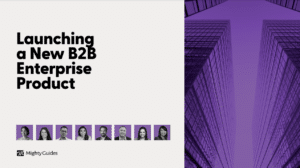
Kalpesh Doshi: A Framework Is a Foundation
When you adopt a framework, you’re walking a road that many have walked before you, and they have all shared their experience. Frameworks help clients interpret the results of third-party assessments. If an assessment finds a compliance deviation, the client can...

Ole Frandsen: A Framework Enables a Consistent Security Practice in an Extended Global Enterprise
Without a framework, you have no basis for establishing controls in a consistent way across an extended enterprise. Having a maturity measurement makes it easier to determine where you are in relation to client requirements, and what you must invest to support a...

Javed Ikbal: Use a Framework to Map Client Requirements to Your Security Practices
Adopting a recognized security framework that has been tested and vetted enables a security posture that translates directly to client requirements. A framework serves as a basis for quickly complying with new regulatory requirements without having to start from...

Eric Bedell: The Framework Provides a Common Language for a Global Company
One example of how a framework based on the ISO standard must be modified to meet local compliance requirements is European operations needing to comply with GDPR. When implementing a framework, begin by focusing on goals and data that are most important, deliver on...

Gary Hayslip: Frameworks Provide an Excellent Way to Understanding Risk
Frameworks provide a central gathering point for important questions about the business that must be answered before moving forward. Adherence to a framework helps everyone in the organization see why their part is critical and that the actions they must take are not...

Daniel Cisowski: Even for Sophisticated Companies, Frameworks Help With Navigation and Priority Setting
Mature companies tend to know what they need to do, but frameworks add an element of standardization and discipline that helps bring order and reproducibility to security processes. Choosing an appropriate framework requires experience and familiarity combined with a...

Carlos Lerma: Frameworks Strengthen a Collaborative Security Process
Adopting a security framework and roadmap helps manage the growing security challenges that come from having an increasingly complex infrastructure. The adoption of a framework and a roadmap strengthens a collaborative security process in which business and IT...

Joshua Danielson: With a Framework, You Make Security Decisions Based on Collective Knowledge
A security framework enables you to build a process for making cyber risk decisions based on a collective body of knowledge. One of the key elements in selecting a security framework is its ability to adapt to the business at hand. Flexibility is important. “It gives...

Avinash Tiwari: Frameworks Provide Many Benefits, but Implementation Is Key
By providing a standard against which you can measure, a framework enables a more scientific approach to security governance. Realizing the benefits of a standard framework depends on effective implementation, which is not always so easy. “With a framework, you can be...

Erik Blomberg: Frameworks Can Play a Role in Building Customer Confidence and Transparency
Security practices can become important customer-facing communications, instilling brand confidence and awareness. Frameworks provide the foundation for a security strategy that builds on best practices, with added, specific requirements on a country-by-country or...


